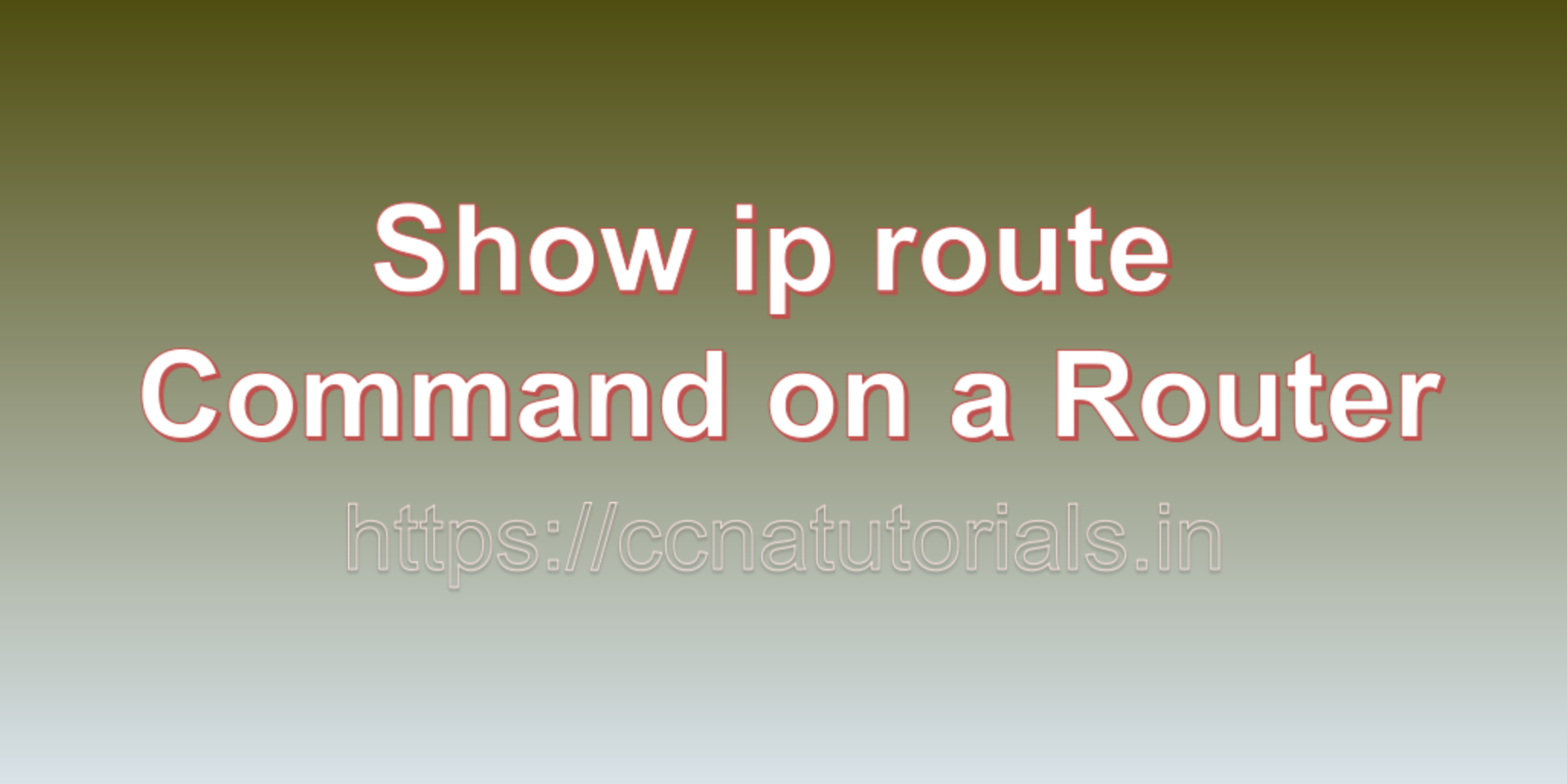Contents of this article
In this article, I describe a very basic and important command show ip route Command on a Router in Packet Tracer. In the world of networking, routers play a pivotal role in directing data packets across networks. To efficiently manage this task, routers use routing tables that contain information about the best paths to different destinations. The “show ip route” command is a crucial tool for network administrators and engineers to inspect and understand these routing tables. In this blog, we’ll explore the “show ip route Command on a Router in Packet Tracer”, its significance, and how to interpret its output using Packet Tracer, a popular network simulation tool.
The Purpose of the show ip route Command on a Router in Packet Tracer
The show ip route Command on a Router in Packet Tracer is used to display the routing table on a router. This routing table contains essential information about how the router should forward IP packets. It provides details about available routes, next-hop routers, and the interfaces through which data should be transmitted. Here’s a breakdown of the key information the command reveals:
Destination Network:
The destination network or prefix for which routing information is displayed. This includes both IPv4 addresses and their associated subnet masks.
Routing Source:
The source or method through which the router learned about the route. Common sources include “Connected” (directly connected networks), “Static” (manually configured routes), and various routing protocols like OSPF, EIGRP, or RIP.
Administrative Distance:
A numerical value representing the trustworthiness of the routing source. Lower values indicate higher trust. For example, connected routes have an administrative distance of 0.
Metric/Cost:
The metric or cost associated with the route, which varies depending on the routing protocol used. For instance, in OSPF, this might represent the cost based on bandwidth.
Next-Hop IP Address:
The IP address of the next-hop router or destination router to which packets should be sent to reach the specified network. In some cases, it may indicate a local interface if the destination is on a directly connected network.
Outgoing Interface:
The exit interface through which packets should be sent to reach the destination network.
Subnet Mask:
If the destination network is displayed without a subnet mask in the first column, the corresponding subnet mask is provided in this column.
Age:
Information about how long the route has been present in the routing table. This helps identify stale or outdated routes.
Using “show ip route” in Packet Tracer
Packet Tracer is an excellent tool for learning and practicing networking concepts, including the use of CLI (Command-Line Interface) commands. Here’s how you can use the “show ip route” command in Packet Tracer:
- Create a Network Topology: Launch Packet Tracer and design a network topology by adding routers, switches, and connecting cables.
- Access Router CLI: Double-click on the router you want to work with. This opens a command-line interface (CLI) window.
- Enter the Command: In the router’s CLI window, type the following command:
show ip route- Interpret the Output: The command will display the router’s routing table, showing the destination networks, routing sources, next-hop IP addresses, and outgoing interfaces, among other details. Interpret the output to understand how the router is making routing decisions and forwarding packets to their destinations.
Conclusion for show ip route Command on a Router in Packet Tracer
This article is about to provide some information of show ip route Command on a Router in Packet Tracer. The “show ip route” command is a fundamental tool for network administrators and engineers, providing insight into how routers make routing decisions. In Packet Tracer, this command is a valuable resource for learning and practicing network troubleshooting, configuration, and understanding routing behavior. By using Packet Tracer and mastering this command, network professionals can develop the skills needed to manage and troubleshoot real-world network environments effectively. I hope you found this article helpful related to show ip route Command on a Router in Packet Tracer. You may drop a comment below or contact us for any query related to contents of this website.






